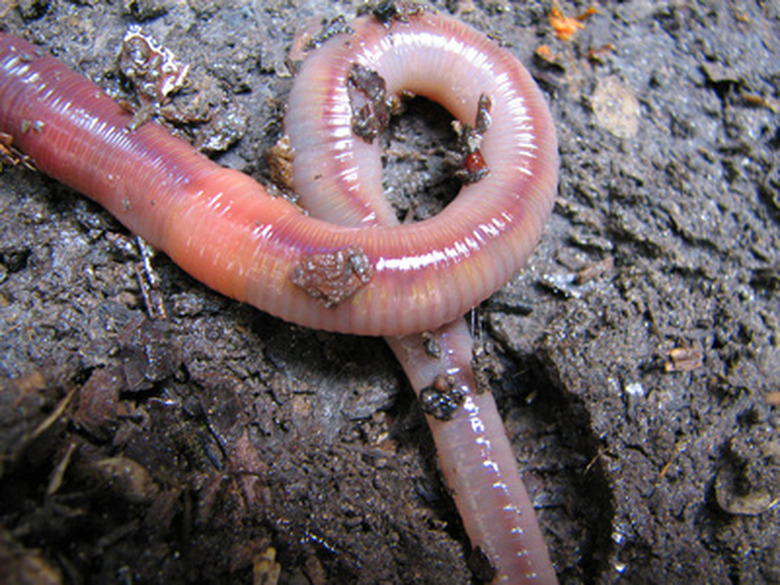Earthworm Science Projects
Earthworms have a lot of information to teach us. Science experiments with earthworms can demonstrate how worms help crops. They play an important role in the environment, reduce waste and help vegetation grow by adding important nutrients to the soil. They are also interesting because they can regenerate parts of their bodies when needed. Try several science experiments with your students or children to teach them the importance of these annelids.
The Effect of Worms on Plant Growth
The Effect of Worms on Plant Growth
Children of any age can perform this science experiment that shows how worms affect the soil and help to make things grow. Start by placing two to four plant seeds in four small pots (green beans or tomato seeds work well). Be sure to put the same number of seeds in each pot. Add soil to the pots (the same amount per pot) to cover the seeds. Place two worms in two pots and place no worms in two pots. Water each pot with the same amount of water every few days when the soil is dry. The plants in the two pots with the worms should see better growth than the other two pots because the worms' waste material should make the soil more fertile.
Composting Worm Farm
Composting Worm Farm
This project is good for all ages and demonstrates how you can utilize compost to benefit your garden, along with what types of food that worms eat. Gather several tubs and place different composting materials in each one. For example, you could use fruit, vegetable scraps, eggshells and coffee grounds. Put the same amount of worms into each container. Record the amount of material that you put into each container. Check the status of the composting material every day and weigh the containers to get an accurate account. Keep careful track of the amounts in a journal. The tub with the least amount of scraps at the end of the experiment contains the worms' favorite food. You can use the worm casings to fertilize soil to grow seeds in the spring for another science project.
Regenerating Worms
Regenerating Worms
This project works best with higher elementary or middle school children and shows how worms can regenerate the parts of their bodies that are cut off. Place some moist compost into the bottom of four cups. Cut a worm in half and place the front half in one cup and the back half in a second cup. Cut another worm one-third of the way from one end. Place the long piece into one cup and the short end into another cup. Label the cups with which part of the worm is in them. Cover the cups with plastic wrap and poke several holes in the plastic wrap. Every three days, dump out the cups onto paper plates and examine the worms to see if they are regenerating. Record the results.
Effect of Earthworm Density
Effect of Earthworm Density
Earthworms consume surface vegetation and their casting material fertilizes the soil. This project shows how variations in the worms' environment affect their consumption of grass clippings. Put the same amount of soil in four same-sized containers and add equal amounts of grass clippings along with several equal-sized earthworms. Place one container in an area with a space heater close to it. Place another container in a cooler area (perhaps near an air conditioner or outside if the weather is chilly). Place one container in a closet to study the affects of darkness and shine a light on the fourth container to study the effect of constant lighting on the earthworms. Check the amount of grass clippings each day to see which worms are eating the most and how the environment affects the worms.
Cite This Article
MLA
Tinus, Donna. "Earthworm Science Projects" sciencing.com, https://www.sciencing.com/earthworm-science-projects-7909412/. 22 November 2019.
APA
Tinus, Donna. (2019, November 22). Earthworm Science Projects. sciencing.com. Retrieved from https://www.sciencing.com/earthworm-science-projects-7909412/
Chicago
Tinus, Donna. Earthworm Science Projects last modified August 30, 2022. https://www.sciencing.com/earthworm-science-projects-7909412/
